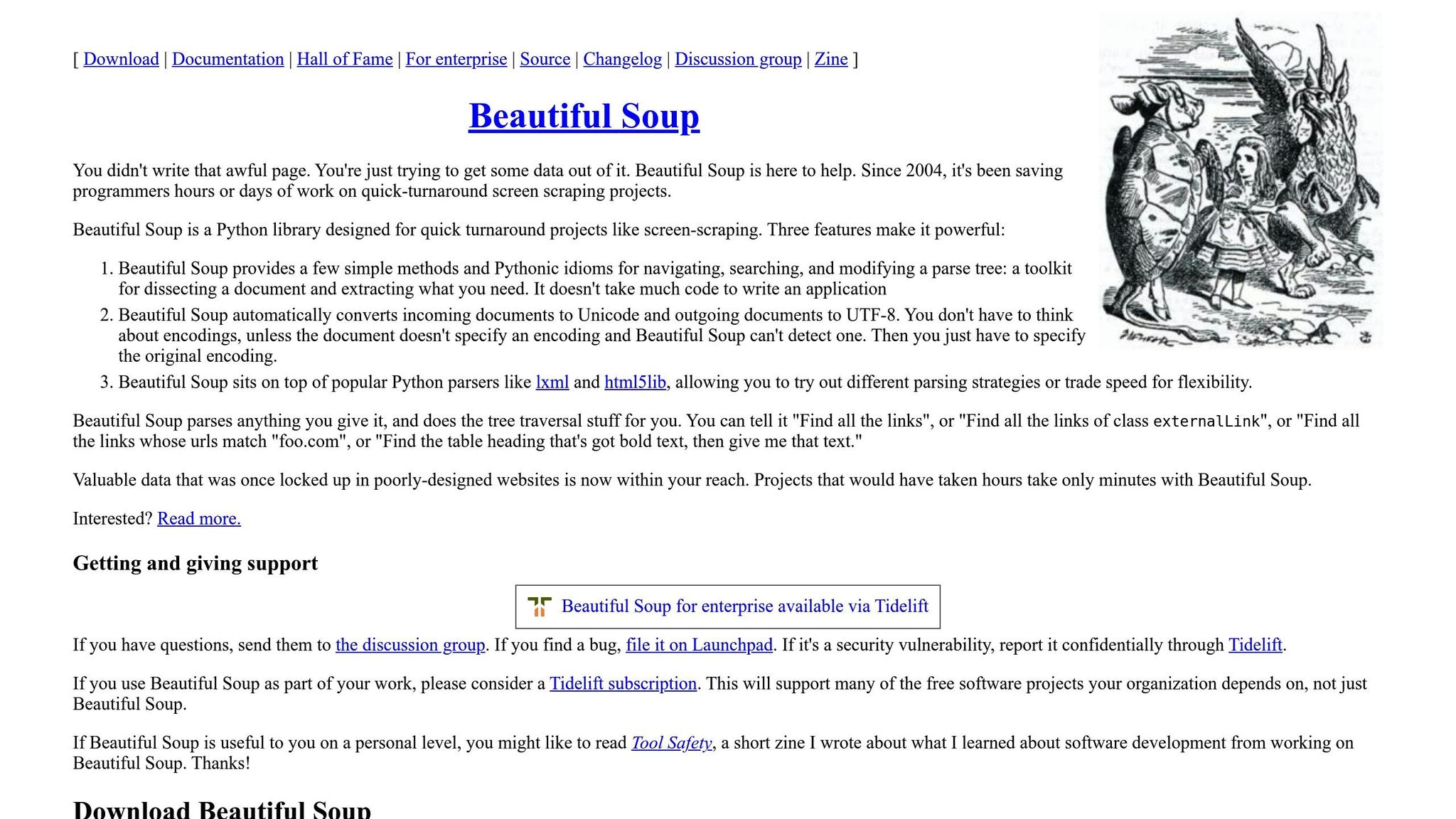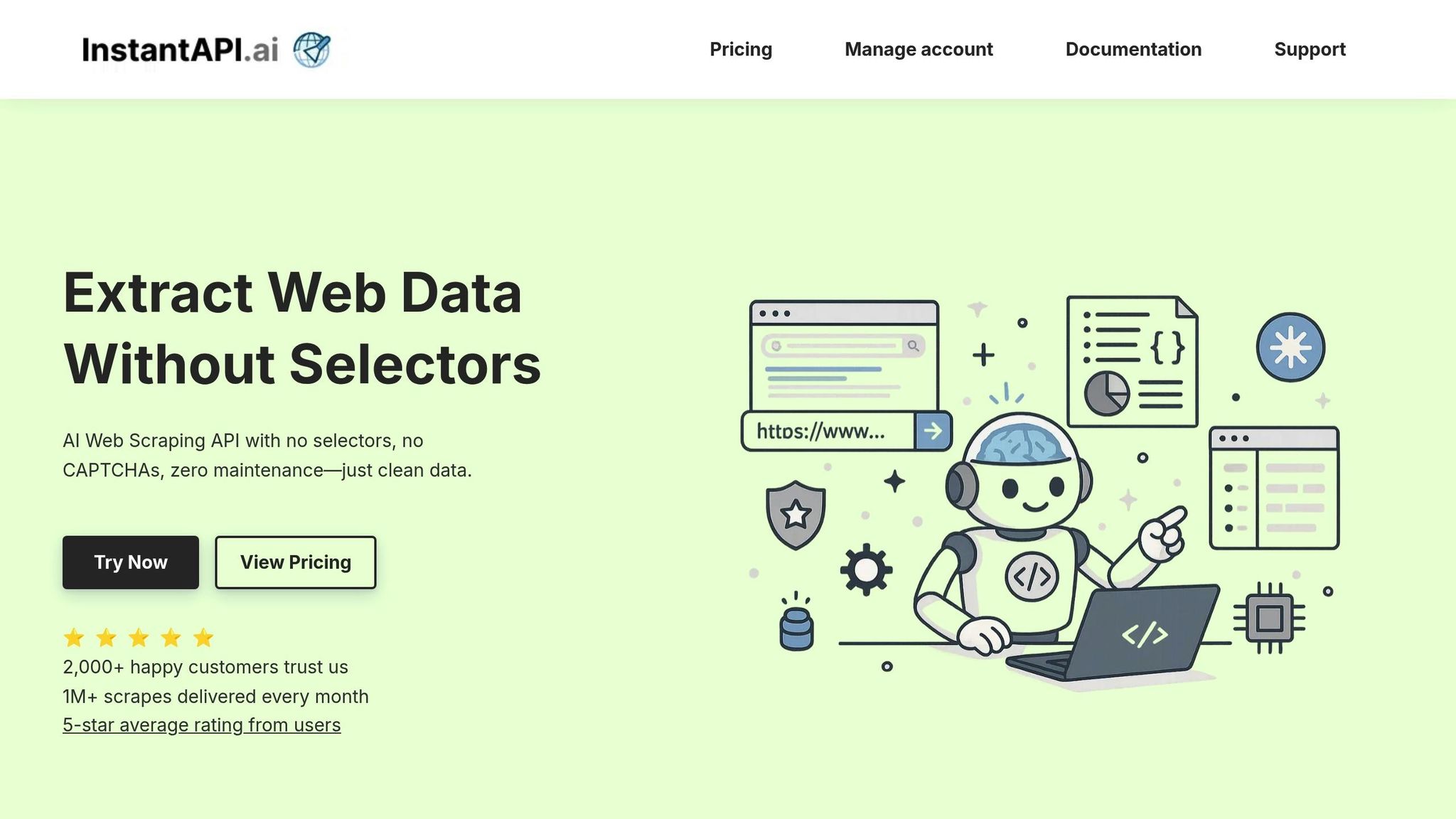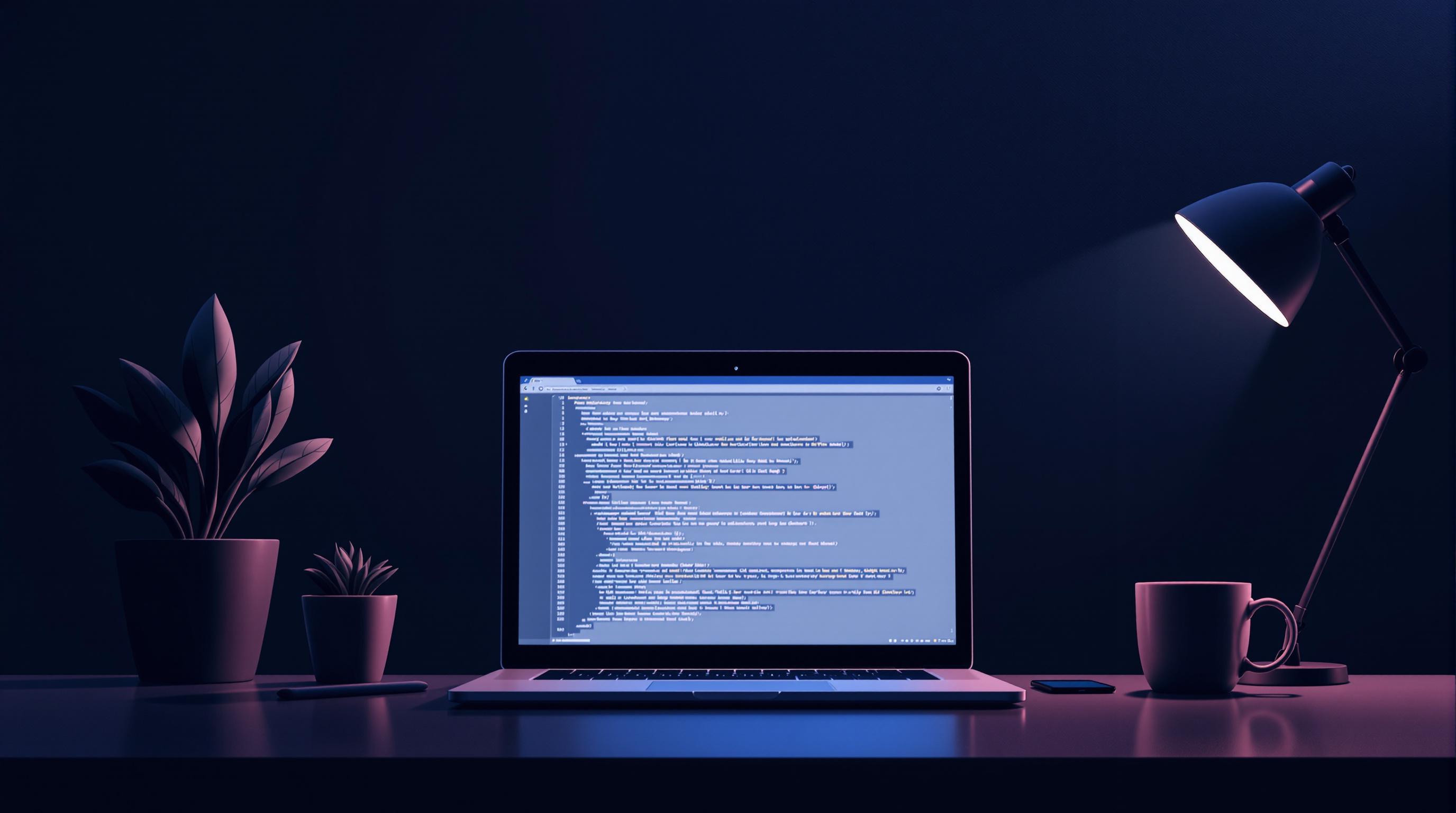Web scraping has become a powerful tool for beauty brands to stay competitive in a fast-changing market. By collecting data from brand websites, e-commerce platforms, and social media, companies can monitor product launches, track competitor pricing, and analyze customer trends. This data helps brands respond quickly to shifts in consumer behavior, such as the growing demand for personalized, multifunctional, and ethically produced products. However, traditional scraping methods often face challenges like website updates, CAPTCHAs, and proxy bans, making them unreliable and costly to maintain.
Key Takeaways:
- Why it matters: Real-time data enables brands to track trends, launch products that meet customer needs, and improve sales performance.
- Challenges: Issues like selector drift, anti-bot defenses, and high maintenance costs make traditional scrapers inefficient.
- Solution: Tools like InstantAPI.ai simplify data extraction with AI-driven features, handling technical hurdles like proxy management and CAPTCHA-solving at just $2 per 1,000 pages scraped.
Advanced Web Scraping Tutorial! (w/ Python Beautiful Soup Library)

Main Data Sources for Beauty Product Launch Tracking
Tracking beauty product launches effectively relies on three key data sources: brand websites, e-commerce platforms, and social media. Together, they offer a wealth of information about new products, trends, and how consumers respond.
Brand Websites
Brand websites are a goldmine for official product information. They typically feature detailed specifications, ingredient lists, pricing, high-quality images, and launch dates. Since many of these sites follow standard HTML layouts, it’s relatively straightforward to extract data from product pages, which often include consistent elements like product names, descriptions, prices, and availability.
This data is often integrated into AI tools for real-time monitoring. However, challenges can arise when websites are updated or redesigned, potentially disrupting scrapers that rely on specific selectors. Websites built with JavaScript-heavy frameworks can also complicate the process, requiring more advanced techniques to capture live updates.
E-Commerce Platforms
Platforms like Sephora, Ulta Beauty, and Amazon provide structured data that’s invaluable for tracking. From product names and descriptions to prices, reviews, and stock levels, these platforms offer insights that help brands fine-tune pricing strategies and gauge demand.
Customer reviews are particularly valuable, offering a direct line to consumer opinions. Brands can use this feedback to address concerns, improve products, or amplify positive aspects. Monitoring stock levels and pricing across multiple retailers also allows brands to respond quickly to shifts in demand. However, advanced anti-bot measures and dynamic content on these platforms often require more sophisticated scraping methods.
Social Media Channels
Social media platforms like Instagram and TikTok are where beauty trends take off. Influencer posts, unboxing videos, and user engagement provide early glimpses into product launches. Metrics such as hashtag trends and sentiment analysis reveal market buzz and consumer excitement.
Setting Up AI-Powered Web Scraping for Product Launch Monitoring
Traditional web scrapers often break when websites update their layouts. Enter InstantAPI.ai - an AI-powered tool that handles these challenges automatically. This approach ensures a smooth setup process and uninterrupted access to actionable data.
Creating a Data Schema for Beauty Product Information
The first step in monitoring beauty product launches is defining what data to collect. A clear and structured data schema ensures consistency across your sources and simplifies analysis.
For beauty products, your schema should include key product details such as names, descriptions, and SKU numbers. Add pricing information formatted in US dollars (e.g., $19.99, $45.00), launch dates in MM/DD/YYYY format, availability status, and high-resolution image URLs. Don’t forget ingredient lists and specifications like shade ranges, sizes (in fluid ounces or grams), and target skin types.
To gauge customer interest, track engagement metrics like review counts, average ratings, and social media mentions. For seasonal or limited-edition launches, monitoring stock levels and restock alerts is essential. Together, these metrics provide a comprehensive view of product performance.
InstantAPI.ai makes this process seamless. Simply describe your data needs in a JSON schema, and the AI does the heavy lifting by populating it. As websites change layouts, the system adapts automatically - eliminating the need for constant maintenance.
Using InstantAPI.ai for Automatic Data Extraction

InstantAPI.ai takes care of the technical hurdles like proxy management, CAPTCHA handling, and JavaScript rendering. This allows you to focus on analyzing the data rather than troubleshooting extraction issues.
The platform offers endpoints tailored for different tasks, including single product extraction, catalog-wide tracking, and pagination. Its AI can interpret product information contextually, so it works even when websites use inconsistent layouts or naming conventions.
With a pay-per-use pricing model of $2.00 per 1,000 pages scraped and no minimum spend, it’s a cost-effective solution. This flexibility is particularly useful during high-demand periods, such as holiday product launches.
Adding Data to Analytics Pipelines
Once you've extracted the data, the next step is integrating it into your analytics systems. InstantAPI.ai delivers clean JSON data, making it easy to feed into databases, dashboards, or business intelligence tools.
For the US market, ensure your data adheres to local formatting standards. Prices should include dollar signs and proper decimal points, dates should follow the MM/DD/YYYY format, and measurements (like fluid ounces) should use imperial units.
To automate updates, integrate JSON data via REST APIs or scheduled workflows. Tools like Airflow, Zapier, or even simple cron jobs can trigger data collection and processing.
Real-time monitoring becomes a reality when you connect your scraped data to alert systems. Set alerts for new product launches, price changes, or low stock levels. These notifications enable marketing teams to act quickly, whether it’s responding to competitor moves or addressing supply chain challenges.
For added efficiency, consider creating standardized data feeds that serve multiple teams. For instance, product managers might focus on launch dates and feature sets, while marketing teams prioritize pricing and promotional strategies. A centralized pipeline ensures everyone gets the data they need without duplicating efforts.
The standout benefit of InstantAPI.ai is its reliability. Unlike traditional scrapers that often break silently when websites change, InstantAPI.ai adapts to these changes, ensuring your analytics remain up-to-date - even when websites introduce redesigns or advanced anti-bot measures.
sbb-itb-f2fbbd7
Solving Web Scraping Problems with InstantAPI.ai
Beauty brands face a unique set of challenges when it comes to tracking product launches across multiple websites. Traditional scraping methods often struggle to keep up, breaking down when sites change layouts or introduce new security features. InstantAPI.ai tackles these issues head-on with an AI-driven solution that eliminates the technical frustrations typical of conventional scrapers.
Traditional Methods vs InstantAPI.ai: A Side-by-Side Look
The fast-paced nature of the beauty industry exposes the shortcomings of traditional scraping methods. Here's how InstantAPI.ai steps in to address these problems:
| Challenge | Traditional Methods | InstantAPI.ai Solution |
|---|---|---|
| Selector Drift | CSS selectors break when sites update, requiring constant fixes | AI-driven, no-selector extraction understands page content contextually |
| Bot Defenses | CAPTCHAs and rate limits block scrapers, needing extra proxy services | Built-in CAPTCHA handling and proxy rotation with a 99.99%+ success rate |
| JavaScript Rendering | Dynamic content often gets missed | Full headless Chromium rendering captures all content |
| Cost Structure | Fixed costs like monthly minimums and seat licenses | Pay-as-you-go pricing at $2.00 per 1,000 pages, no minimum spend |
| Maintenance Overhead | Requires ongoing engineering updates | Zero maintenance - adapts automatically to website changes |
InstantAPI.ai’s no-selector extraction approach is a game-changer. Instead of relying on specific HTML elements, the AI understands product information in context. For example, if MAC Cosmetics revamps its product pages, InstantAPI.ai adjusts automatically - no manual updates or coding required.
This adaptability ensures beauty brands can handle ever-changing launch data demands with ease.
Managing Fluctuating Workloads for Beauty Product Launches
Once technical challenges are addressed, the next hurdle is managing the unpredictable data demands that come with beauty product launches. These events often create sudden spikes in scraping needs. Holiday collections, limited-edition drops, and seasonal campaigns can lead to significant surges in data collection, followed by quieter periods. For brands relying on fixed-cost scraping services, this mismatch can lead to inefficiencies.
Take a typical beauty brand, for instance. During an average month, you might need to scrape 50,000 pages to monitor competitor pricing and inventory. But when brands like Fenty Beauty or Rare Beauty announce new collections, your scraping requirements could skyrocket to 500,000 pages in a single week as you track announcements, product details, and social media activity.
Fixed-tier scraping services don’t adjust to these fluctuations. You’re stuck paying the same monthly fee whether you scrape 10,000 pages or 100,000. This either forces you to overpay for unused capacity or risk missing critical data during high-demand periods.
InstantAPI.ai’s pay-per-use model solves this problem. During slower periods, you only pay for the pages you scrape. When a major launch - like Glossier unveiling a new skincare line - requires comprehensive tracking, you can scale up seamlessly without worrying about minimum fees or overages.
At $2.00 per 1,000 pages, InstantAPI.ai offers a cost-effective solution for brands of all sizes. Startups can affordably monitor competitors, while larger brands can handle massive launch events without being penalized by fixed costs.
This flexibility is especially helpful for seasonal campaigns. Think back-to-school makeup collections, holiday gift sets, or summer skincare launches - all of which create temporary spikes in data needs. With InstantAPI.ai, your costs align with your business cycles, not against them.
With a 99.99%+ success rate, the platform ensures you capture critical launch data even during high-stakes periods. When every beauty brand is rushing to announce Valentine’s Day collections and websites ramp up security, InstantAPI.ai keeps working, while traditional scrapers often fail under the pressure.
Best Practices for Managing Scraped Beauty Data
Once you've extracted beauty data using InstantAPI.ai, the next step is to manage and format it effectively. Properly organizing this data is essential for making informed business decisions. Without careful handling, you risk errors in pricing, missing product launches, or drawing incorrect conclusions from your analysis.
Keeping Data Fresh and Accurate
The beauty industry moves quickly. New shades are constantly added, limited-edition products sell out in hours, and prices shift based on promotions or stock levels. Your data management strategy needs to keep up with these rapid changes while ensuring accuracy across all sources.
Start by normalizing data from different retailers into a consistent format. Use an ETL (Extract, Transform, Load) process to clean, standardize, and validate the data. For instance, if you're tracking MAC Cosmetics lipstick launches across multiple retailers, your system should flag discrepancies like incorrect prices or missing shade details.
Automated alerts can help catch data quality issues early. Set alerts based on historical trends. For example, if a foundation typically priced between $45–$65 suddenly shows up at $4.50, your system should flag this as an anomaly. Similarly, if a major brand like Fenty Beauty shows no new products during a known launch period, investigate the deviation.
Cross-referencing your data with trusted sources is another way to maintain reliability. For example, if Glossier announces a new product on its official site, verify that the same information appears correctly across all monitored retailers.
Data cleaning is crucial to avoid skewed analysis. Remove duplicate entries, fix typos in product names, and standardize formatting inconsistencies. For example, ensure that a product listed slightly differently on various pages is consolidated into a single entry.
Continuous monitoring of your scraping operations is essential. Dashboards tracking metrics like successful page extractions, data completeness, and processing times can help you quickly identify and resolve issues. Don’t wait for problems to surface - proactively investigate any unusual patterns in the data.
Once your data is cleaned and verified, formatting it to meet US standards ensures it’s ready for seamless integration into your analytics tools.
Formatting Data for US Standards
To maximize the value of your data, it should be formatted according to US conventions. For beauty brands operating in the US, proper formatting avoids confusion and ensures clear interpretation of business insights.
- Currency formatting: Display all prices in US dollars using the $XX.XX format. If you're scraping prices in euros or pounds, convert them to dollars (e.g., €42.00 becomes ~$45.12).
- Date formatting: Use the MM/DD/YYYY format standard in the US. For example, a European launch date like 15/10/2024 should be converted to 10/15/2024.
- Measurements: Use imperial units, adding metric where necessary for clarity.
- Number formatting: Follow US conventions, using commas for thousands and periods for decimals (e.g., 1,234,567 likes or $1,299.99).
- Phone numbers: Format as (XXX) XXX-XXXX.
- Temperature: Convert to Fahrenheit. For example, "below 25°C" becomes "below 77°F."
- Product categorization: Use American terminology. For instance, replace "colour cosmetics" with "color cosmetics."
Automating these formatting rules within your data pipeline minimizes manual errors and ensures consistency. This approach ensures that all scraped beauty data aligns with US standards before being used in analysis or reporting. By maintaining these practices, you’ll stay ahead in the fast-paced world of beauty product tracking.
Conclusion: Improving Beauty Product Launch Tracking with InstantAPI.ai
The beauty industry moves at lightning speed, with constant product launches, flash sales, and inventory updates. This fast pace makes traditional web scraping methods struggle to keep up, especially with the intricate and ever-changing websites beauty brands rely on. InstantAPI.ai changes the game by removing the technical headaches that usually bog down data engineers. Instead of wrestling with site changes or proxy problems, teams can focus on delivering meaningful insights to decision-makers.
With a 99.99%+ success rate, InstantAPI.ai ensures dependable data collection, even during high-traffic events like major product launches. This reliability translates into better data accuracy and collection efficiency, keeping the information flow smooth without requiring manual fixes when big beauty brands drop new collections.
Affordability is another standout feature, particularly for beauty brands tracking a wide range of competitors across different price tiers. At just $2 per 1,000 pages scraped and no monthly minimums, InstantAPI.ai offers a cost-effective alternative to traditional scraping services. This pay-as-you-go pricing is perfect for the beauty industry, where data needs can surge during events like holiday launches or brand collaborations. The platform's unlimited concurrency feature is a lifesaver during these busy periods. Whether you're monitoring 50 brand websites during New York Fashion Week or scaling up to track 500 retailer pages for Black Friday beauty deals, InstantAPI.ai handles the workload seamlessly.
FAQs
How can web scraping help beauty brands track new product launches and consumer trends?
Web scraping provides beauty brands with access to real-time data from various sources, including brand websites, e-commerce platforms, and social media. This data can cover everything from new product launches and pricing details to customer reviews and competitor activities. By diving into these insights, brands can spot trends as they emerge, get a clearer picture of consumer preferences, and adjust their strategies on the fly.
It also allows brands to track customer sentiment by analyzing reviews and social media conversations. This deeper understanding of what appeals to their audience helps them time product launches effectively and maintain a competitive edge in the ever-evolving beauty industry.
What challenges do traditional web scraping methods face in the beauty industry, and how does InstantAPI.ai solve them?
Traditional web scraping in the beauty industry comes with its fair share of headaches. Frequent website updates can break scrapers, anti-scraping tools like CAPTCHAs and IP bans add extra layers of difficulty, and inconsistent data collection can throw everything off balance. All of this makes keeping scrapers functional both time-consuming and expensive.
InstantAPI.ai takes these challenges head-on with its AI-powered approach. It automatically adjusts to website changes, navigates CAPTCHAs, and handles proxies effortlessly. This means less manual effort, more accurate data, and a smoother, more dependable scraping process - perfectly suited for the ever-evolving beauty industry.
Why is it important to format scraped data for US standards, and how can you do it effectively?
Formatting scraped data to match US standards is crucial for maintaining accuracy, improving usability, and ensuring smooth integration into local systems. When data conforms to these standards, it minimizes errors during analysis and makes the information more accessible for US-based users.
Here are a few key practices to keep in mind:
- Dates: Always format dates as MM/DD/YYYY to align with US conventions.
- Currency: Represent monetary values using the US dollar symbol ($), with proper decimal points and thousand separators, such as $1,234.56.
- Measurement Units: Convert measurements to imperial units, like inches, feet, or pounds, where applicable.
Sticking to these guidelines not only ensures consistency but also makes your data more dependable and ready for use in US-specific applications.


